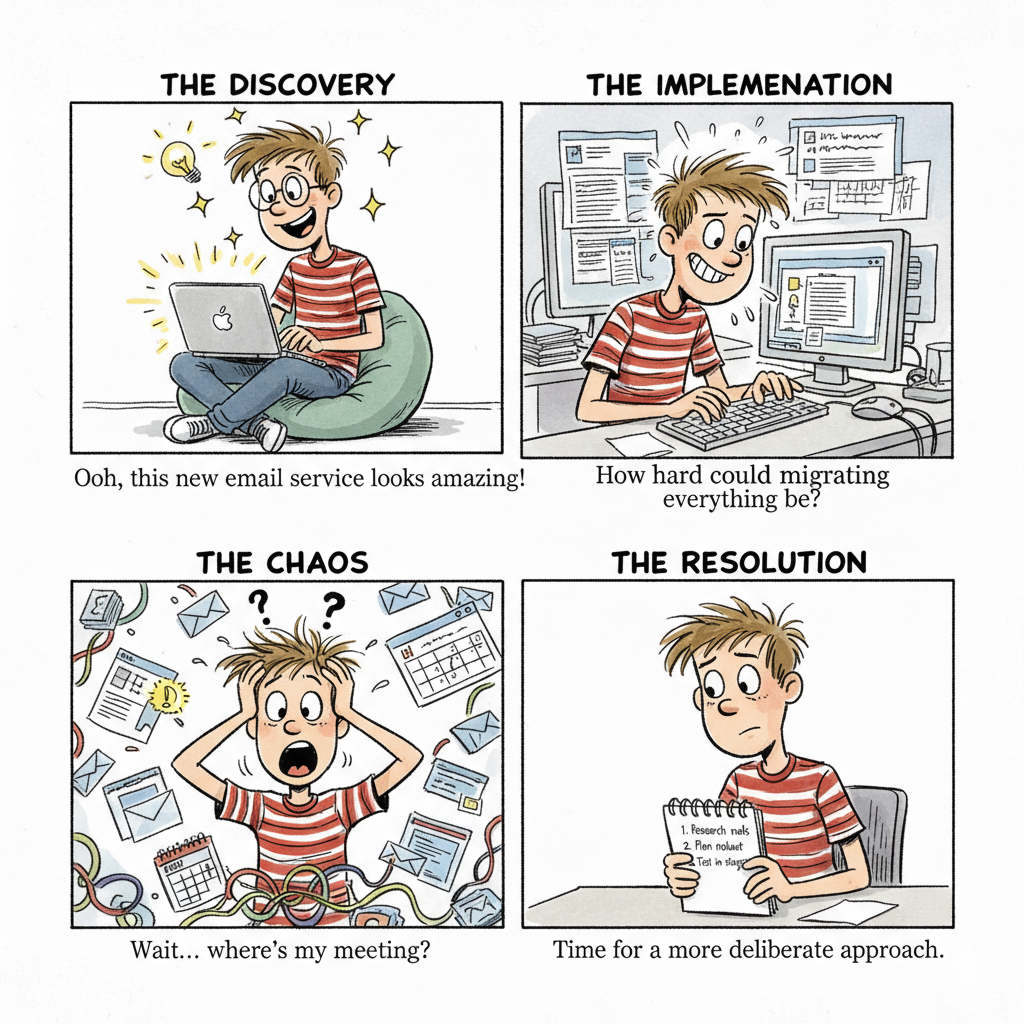Breaking Free from Shiny Object Syndrome: A Tech Lover’s Recovery Plan

I am occasionally my own worst enemy.
I love figuring things out. I’m passionate about technology. And I can get drawn down a settings rabbit trail in the blink of an eye.
While they’re usually positives, those three traits can combine into a dangerous mix. When what I want to change doesn’t go the way I expect, I can rush headlong into changing more settings and making more updates.
Seemingly, in the blink of an eye, an hour or two have flown by before I realize it’s happened again: Shiny Object Syndrome.
Because you may also wrestle with this same malady, I want to share how I’m trying to redefine my relationship with tech tools while also improving my privacy and control over my data.
What’s Shiny Object Syndrome?
Dopamine is not our friend.
Our devices – smartphones, tablets, smart watches, computers, etc. – demand our attention by alerting and reminding us into a frenzy. They ping and ding until we shift from the task at hand to attend them.
Mindfully managing notifications is one way to combat their siren’s song. By choosing what is most important to you and silencing the rest, it’s possible to regain some control over your ability to focus on one thing for more than 10 seconds.
Shiny Object Syndrome is similar. It starts with an interesting blog post or article that suggests some change to an online tool, a platform, or even a way of thinking. That’s followed by desktop research—essentially reading company blog posts, testimonials, or Reddit posts about the new thing.
It then crescendos with a flurry of activity designed to realize the promise of the premise I stumbled across. From installing a new app to changing a setting to buying a new device, the thought crystallizes into an action.
It either goes well, or it doesn’t.
Too often, it doesn’t, which is exactly where I found myself last Tuesday.
What Meeting?
A few weeks ago, I read an article describing how to manage your private domain email with Fastmail, a privacy-first email hosting service. I had found my next Shiny Object.
My reasoning was straightforward, or so I thought: I have a domain. I know how to change these settings. How hard could it be?
So one morning before work, I migrated all my emails, contacts, and calendars to Fastmail. I stepped through its migration tools and in almost no time I was in business.
Sort of.
Many Outlook email folders failed to sync, an issue Fastmail support has yet to resolve. My Outlook calendar didn’t sync at all, and a calendar I’d subscribed to in iCloud also didn’t make the leap.
In the space of 36 hours I went from fully committed to Fastmail to feeling like I needed to be committed. With emails in multiple places, none of which were in harmony, and without a unified view of my calendar, I almost missed an afternoon volunteer meeting.
That was when I knew I had to make a change.
I Will Be The Change I Want To See
Change is possible. Changing everything, especially when “everything” includes six different email accounts, multiple calendars, and hundreds of contacts, in 30 minutes is a recipe for disaster.
I needed to reflect on what was most important to me. Instead of blindly chasing the Shiny Object of email privacy, I paused and thought my way through what I most care about.
Because Microsoft shares my data and behaviors with more than 800 advertising partners, I am going to shut down my Outlook.com email address. Yes, that will take time, but once it’s done, I’ll be much happier with my online privacy exposure.
While that shift is underway, I’ll decide if Fastmail really is my right, best choice. I’ve made a list of requirements and will continue to evaluate it in the days ahead.
Finally, to have a shot at controlling Shiny Object Syndrome, any similar work will need to happen in the same deliberate way including:
- identifying the “why.”
- considering the reasons. Is the investment in time and attention worth it?
- reflecting; allowing the whole process to marinate so I can gain valuable perspective.
This will not be easy, but I’m committed to it.
We are, thankfully, all works in progress. And my days rush by so fast that I can’t afford to add tech debt leaping from tool to tool just because it’s fun.
I’ll write more about this in the coming weeks. Come along for the ride.
Image: Generated by Google Gemini.


